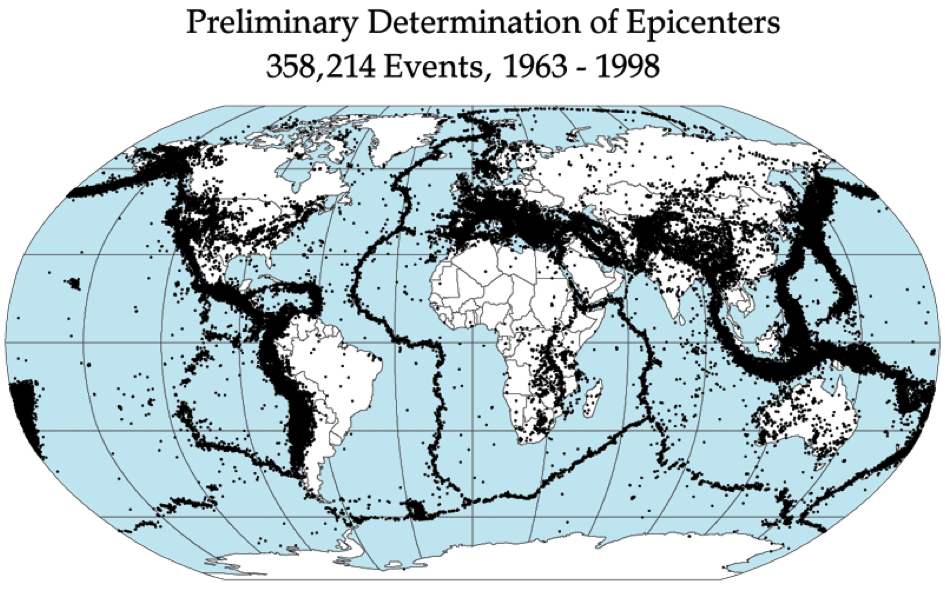
An earthquake is the sudden release of strain accumulated for years and even centuries in the Earth’s crust. Slowly moving tectonic plates cause the strain to build up over time. When the strain is more important than the resistance of the rocks, energy is released, which generates seismic waves. In fact, earthquakes are characterised by a magnitude, a focus (or hypocentre) and a focal mechanism:
- The magnitude of an earthquake is the energy released during the event. You might have heard of the Richter scale, but that is not the one scientists generally use. Today, there are many ways to measure earthquakes; together, these methods help scientists estimate the magnitude of an earthquake. To get an idea of the power of an earthquake, we estimate that a Mw 7 event releases the energy of 32 Hiroshima bombs and a Mw 8 earthquake releases the energy of 1024 Hiroshima bombs.
- The focus (also called hypocentre) of an earthquake is the location where this energy is first released. Hypocenters are useful to plot faults: records of thousands of earthquakes’ hypocenters give a good idea of the 3D shape of a fault. However, faults do not simply rupture at the hypocenter, they rupture along patches. Big earthquakes correspond to big rupture patches: the rupture patch of the 2004 Indian Ocean Earthquake was about 1300km long!
- The focal mechanism is a way to describe the nature and the direction of the slip on the fault responsible for the earthquake.